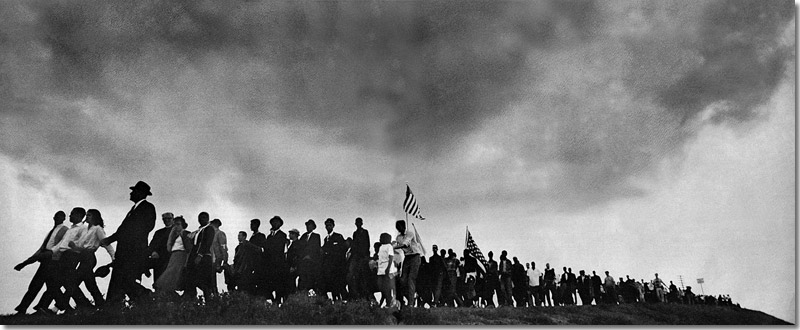 |
Joanne Bland was 11 years old in 1965, but she was already a trained and seasoned marcher for SNCC – "I'm a Student Nonviolent Coordinating Committee person! I was proud of my organization! I had gone to jail. I was a SNICK! I was a warrior!"
She was about half-way back on the Edmund Pettus Bridge in Selma when the state troopers attacked the marchers on Bloody Sunday. "I knew the procedure," she says. Normally, the leaders would ask permission to pass, it would be denied and the group would kneel down for prayer. "Suddenly I heard gun shots and screams. I thought they were killing the people down front. [The 'gunshots' were actually tear gas being fired at the crowd.] But before we could turn to run, they had come in from the sides the back and the front. There was nowhere to go. They were just beating people." At that time, Ms. Bland became a frightened kid again. "You couldn't outrun the cops on horses," she says. "I remember seeing this horse and this lady. I don't know if he hit her and she fell. But I can still hear the sound that her head made when it hit that pavement. Sickening."
|
 |
Eventually, most of the marchers made it back to a Brown Chapel in the middle of a black housing project. All through the night, bullets were fired into the church and the apartments. In the morning, police barricaded the project. Black leaders appealed for Northern church people to come down to Selma, thinking that their presence would bring press attention and lessen the potential for violence.
Bland laughs now that a lot of the Northern whites "didn't understand how dangerous it was. You stood out like a sore thumb. We're black, right? And here we got all these white people who were called 'outside agitators [by the segregationists].' They didn't know they couldn't stay at the hotels. So almost every apartment in George Washington Carver Homes had whites living with them. It became a running joke because my dad would pass by Brown Chapel and see some white person with his backpack up against his back or wrapped up in a blanket. Not knowing they [the Klan] would drive by and shoot you in the dark… So it became a joke in the project. You didn't lock the door until a white person was in the house. [She laughs.]"
|








